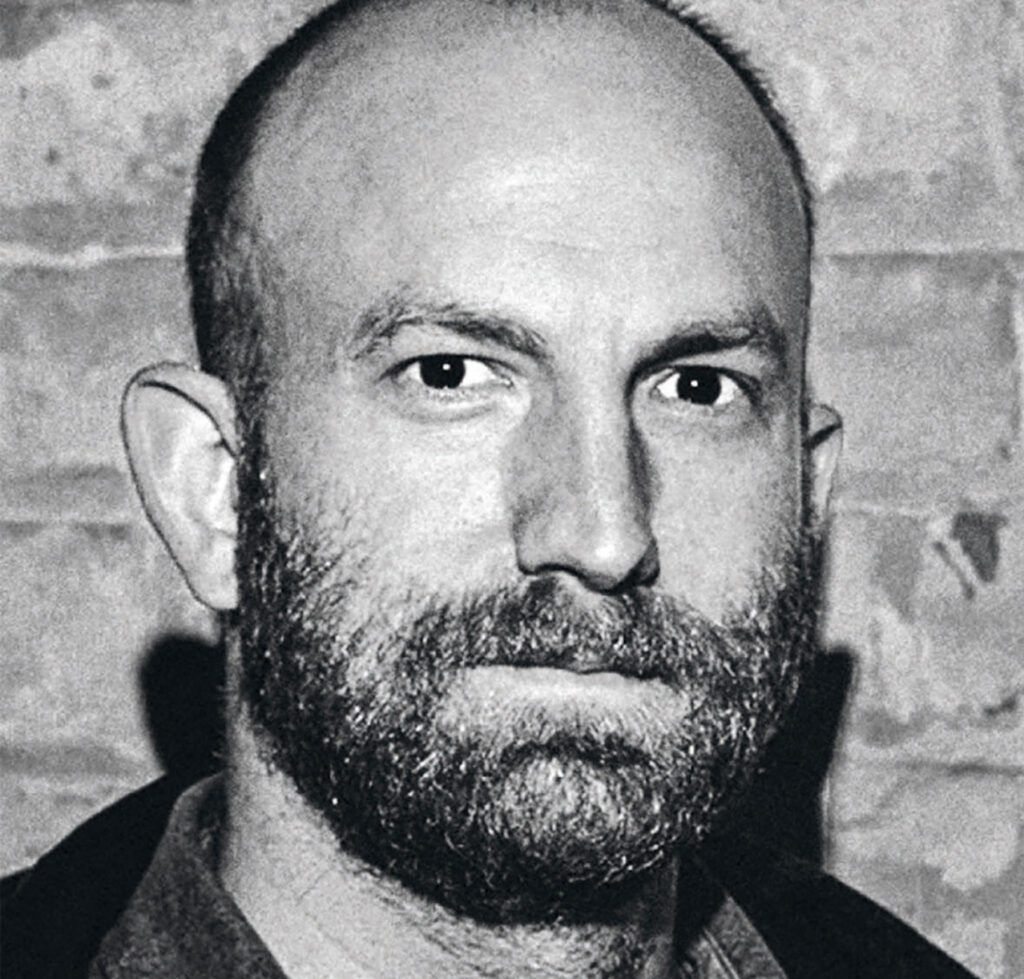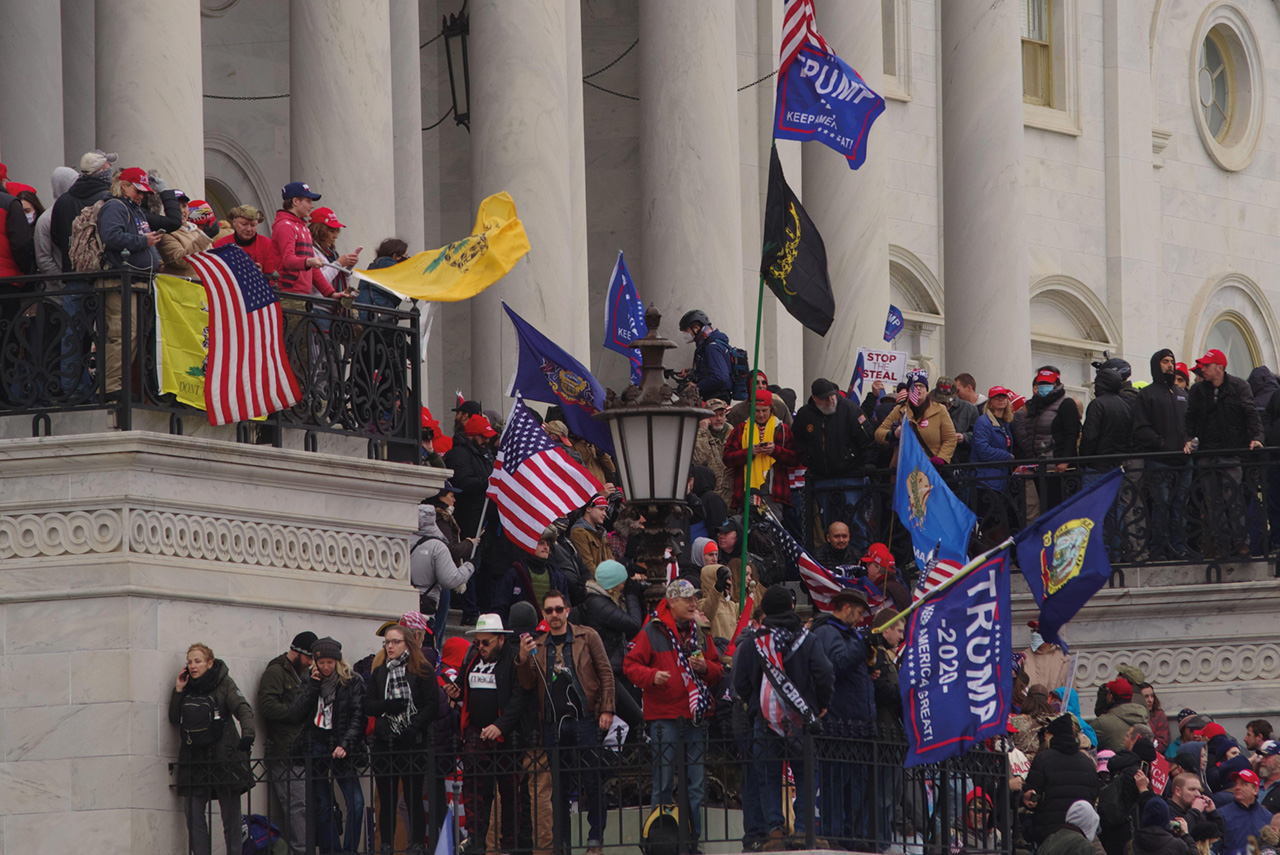Ancient grudges and new mutiny
We talk to the author of a book chronicling events leading to last year’s storming of the Capitol and asks whether FBI raids on Trump’s home might stir up his supporters further
As a war correspondent for New Yorker magazine, Luke Mogelson dodged mujahidin bombs and bullets through some of Afghanistan’s darkest days. He slunk through Iraq and Syria, successfully avoiding the marauding forces of the Islamic State. And, earlier this year, missile storms boomed and crashed all around him while he was on assignment in the Ukrainian city of Lysychansk.
Now he is reporting on another war. But this one is a fight for the heart and soul of his own country, the United States.
“Like most Americans I always believed wars happen elsewhere,” he says in a Zoom interview from his current home in France. “I believed it was always countries like Afghanistan that were somehow predisposed to turmoil and strife.”
But he had also never doubted, he writes in a new book, that under “the wrong set of circumstances” the US could still succumb to spiralling violence as intractable as any war he had reported abroad.
“If the right were to undertake serious violence it would be based on delusional propaganda.”
His fears were confirmed on 6 January last year when a mob of Donald Trump supporters attacked the Capitol in Washington. Mogelson was right in the thick of it, accompanying the crowd from Trump’s rabble-rousing “Stop the Steal” rally at the Ellipse park near the White House and following rioters who broke into the building while a joint session of Congress was meeting to formally confirm Joe Biden’s victory in the presidential elections.
“These Trump supporters were throwing projectiles, using their fists and using pepper sprays to try and break through the police lines,” says Mogelson, 39. “At that point I heard several people in the mob remarking that next time they were going to come back with guns, and if they’d only brought their guns they could easily have solved the problem that day. Who knows? Maybe it was bluster, but I think we would be foolish to assume that they don’t really mean to do what they often explicitly threaten to do.”
After the mob had breached the police lines, Mogelson entered the Capitol through a window that was broken by one of the Proud Boys, a far-right neo-fascist organisation, then he followed a group through the central rotunda and eventually into the Senate chamber, which had just been evacuated by politicians.
“I spent about half an hour with the rioters as they rummaged through senators’ desks, stole documents and gave speeches from the dais, until eventually a large contingent of police showed up.”
The root cause of the mob’s fury that day is the story that Mogelson tries to nail in his book, the “wrong circumstances” that he believes have tipped the US towards the turmoil and strife he has seen in other countries. But what were those circumstances?
What happened in 2020, he says, was a series of events that accelerated the evolution of right-wing groups like the legally armed militias that have sprung up across parts of the US in the last three decades, and also outright racist organisations like the Aryan Nations, Ku Klux Klan and Posse Comitatus.

Mogelson says a major motivating force for them was the Covid-19 pandemic, which killed half a million people in the US – far more than in any other nation – and led to thousands of Americans swallowing internet conspiracy theories about mass murder. Then came the murder of African-American man George Floyd by a police officer in Minneapolis, which sparked nationwide protests about police brutality against Black people. This, says Mogelson, drew clear battle lines between Black Americans, anti-fascists and other leftist groups on one side and right-wing Trump supporters on the other.
“Banks, post offices, and police stations would burn,” he writes in his book. “Thousands of soldiers would be deployed in dozens of cities. Religious extremism would proliferate… Trust in the press would disintegrate, along with confidence in our system of governance. Talk of war, revolution and even the apocalypse would become almost commonplace. Elected officials would attempt a coup.”
Mogelson says he witnessed frustrations over Covid-19 curbs to freedoms grow into a fanatical anti-government movement. This was followed by militias and other armed groups opposing demands for racial justice, then finally the emergence of an organised crusade against democracy. “6 January was not the apotheosis of that evolution,” he adds. “It was another stage. The evolution is ongoing.”
On the day he speaks, an article appears in the Washington Post asking “Is the United States headed for civil war?” Its writer argued that it was easy and logical to conclude that the country now stood as close to descending to internal conflict as at any time since the bloody 1861-65 war that followed the secession of 11 southern states from Abraham Lincoln’s Washington.
So is civil war really likely?
“I don’t know what it would look like,” Mogelson replies. “Every conflict is unique, just like every country is unique. But in our case in particular, if there were to be a large scale civil conflict it would be unlike any other war I’ve covered in the past, in the sense that it would be based largely on fabricated and illusory injuries. In Iraq, Afghanistan, Syria and Ukraine people are fighting in response to real, concrete and often physical threats, and persecution and oppression. But in the US, if the right were to undertake serious violence it would be based on delusional propaganda and theories. I’ve never seen that before, and I don’t know how you address it, how you mitigate it, how you forestall it, or how you resolve it once it’s begun.”
By “delusional propaganda” does he mean politicians claiming to have won an election but it was stolen from them, as happened last year?
“Yes,” Mogelson replies, adding ominously: “And they are not going to let this happen a second time, I don’t think.”
The story told in his book is far from over. New chapters could have been added since it went to the printers. The most recent significant event was the FBI’s raid on former president Trump’s Mar-a-Lago home in search of highly secret documents that were illegally removed from the White House.
Following the raid a poll showed that rather than having a negative impact on Trump’s popularity his standing had actually increased among Republican voters.
“That didn’t surprise me,” Mogelson says. “There is part of the country that is, and has always been, motivated by grievance, by a sense of dispossession and offence and trespass, so they are constantly looking for something which validates their feelings of grievance. So when anything like this happens and confirms that world view, then it’s electrifying for the right in the United States. That’s what happened after Waco. It’s what happens with every attempt to pass gun control legislation.”
Two years after the Waco siege, the 1993 siege in Texas involving the FBI and members of a religious sect that ended with 83 deaths, there were fears of an upsurge in domestic terrorism by right-wing extremists when the Federal Building in Oklahoma City was bombed by a Gulf War veteran, Timothy McVeigh, killing 168 people and injuring nearly 700 others. Mogelson writes that there had been fears the bomb would spark “a chain reaction of resistance”, but it didn’t happen. Similarly, fears of a chain reaction to the 6 January storming of the Capitol were not realised.
As with Oklahoma, have things calmed down again?
“Well, we haven’t had another national election yet so we’ll see what happens in the mid-terms [elections to the House of Representatives and Senate in November]. But more telling will be what happens in 2024, at the next presidential election. If Trump runs again and loses I think that would be sufficient incitement for a considerable reaction from the right”.
The Storm Is Here: America On The Brink by Luke Mogelson is published by Riverrun

Leave a reply
Your email address will not be published.